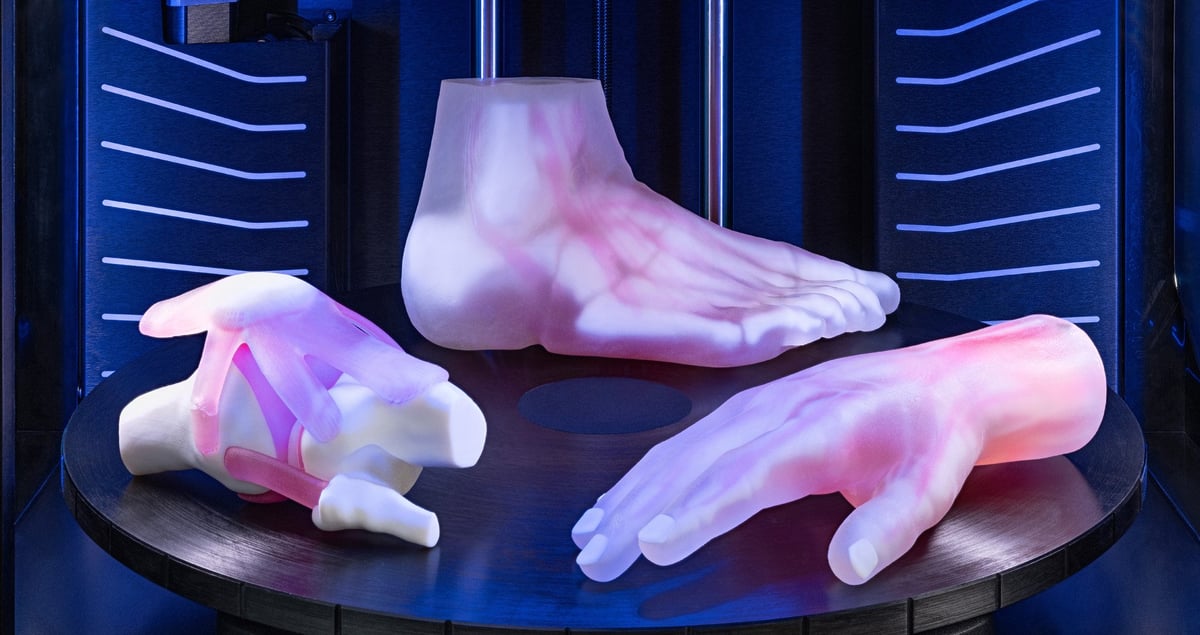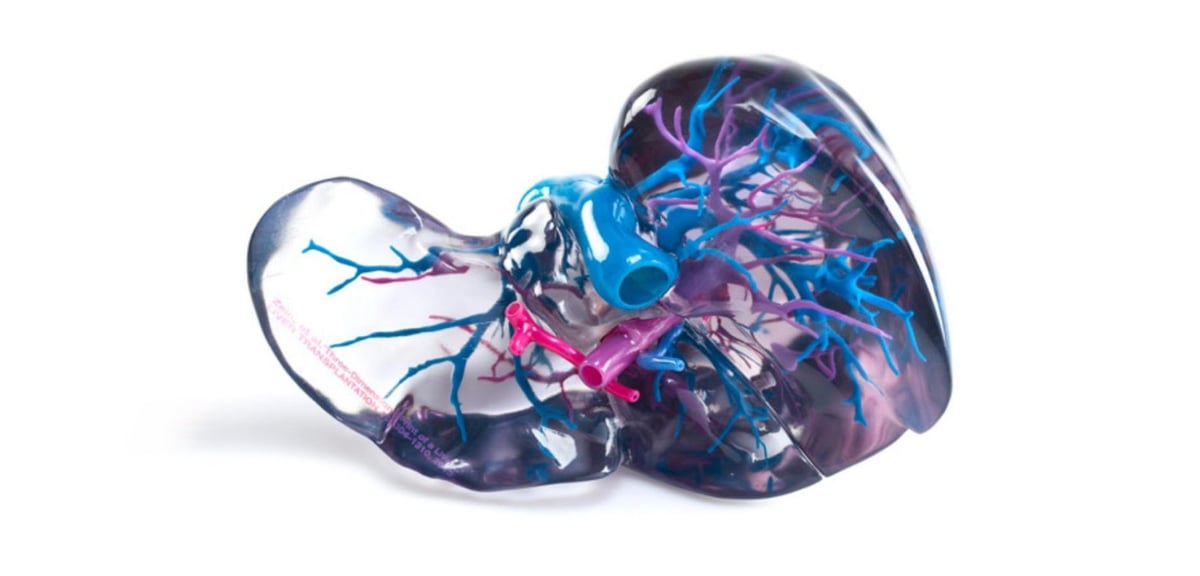When the engineers at Louis Stokes Cleveland Veterans Administration (VA) Medical Center started their look into 3D printing part consistency across medical care locations, they found “statistically significant” deviations in part tolerances between their four Stratasys J5 Medijet Polyjet 3D printers.
“Quality assurance is a crucial process in the production of patient-specific medical models to ensure that segmented anatomy is reproduced without distortion, given the high stakes involved in medical settings,” the VA engineering team said in their new report detailing their solution to quality assurance.

With one Stratasys J5 at a point-of-care location printing parts as much as 57 microns different than parts printed on another Stratasys J5 in another location, the Cleveland VA’s five-member additive manufacturing team knew a quality assurance protocol needed to be established. Even though 57 microns is within established margins for error, the researchers note that this new QA process enables “the identification of machine or print failures even when clinical accuracy standards are met.”
With limited staff and resources, the team devised a cube that could be printed alongside every model. The cube would clearly indicate how far off from perfect the print was and alert staff to make alterations on the machine, since, in the model itself, the defects were not apparent.
This low-cost quality assurance method, using a simple cube, provides a fast way to verify dimensional accuracy and catch any printing errors before using a model for patient care. It can be implemented in busy hospital settings with minimal burden, the researchers concluded.
Printing a test coupon or calibration piece — like a cube — alongside a part is not entirely new, but in the context of point-of-care 3D printing, it represents a novel application.
In medical model 3D printing, most quality assurance studies have focused on specific anatomical parts, not on repeatability across locations.
Cube Design

The cube itself had holes (circular cutouts) on every side so engineers could measure both the outside and inside dimensions. It also had labels printed on three faces, each aligned with a specific direction of the printer’s movement, like front-to-back, side-to-side, and up-down. Note that our cube illustration above is AI-generated and is not the actual cube used by the VA.
The cubes were placed in different areas of the printer’s build platform (closer to the center vs. closer to the edge) to test how position might affect accuracy. For each cube, the team measured three outer dimensions (the sides) and three inner dimensions (the holes). They also visually checked if the cube’s corners were properly square using a machinist’s square (all cubes passed this test).
All J5 machines produced cubes with an average deviation of just 26, 53, and 57 microns in the three measured directions. These are well within the standard quality assurance guidelines for medical use. “The results confirm the accuracy claims made by the manufacturer as the study team found a 1 sigma error of 70 microns across all axes, which is well within the 150 micron accuracy advertised by Stratasys for this printer,” the study notes.
The research found that the shape and position being measured (inner vs. outer dimensions) and the direction (axis) of printing both affected accuracy. Where the cube was placed on the printer’s platform (inner vs. outer edge) only mattered slightly, and mainly for one specific direction (R axis). The material used didn’t make a significant difference in accuracy. While material type didn’t matter, they also tested color, which showed some small differences in print accuracy.
By printing hundreds of cubes across the four machines, the team has a new level of confidence, repeatability, and traceability in their medical models.
So, while the idea of a test print is well-established in manufacturing, applying it in this standardized, repeatable way to POC 3D medical printing is an innovative step toward improving quality and patient safety.
The study authors note that this multicenter, multi-printer study of a new manufacturing and quality assurance protocol can be generalized to other printer technologies. “Crucially, this protocol provides an adaptable framework that enables users to identify and measure the main factors that could influence print accuracy, determine which factors are the most pertinent to their situation, and then implement a simple process for every print that enables them to continuously assess these factors.”
Access the research report “Multi-Site evaluation of a novel point-of-care 3D printing quality assurance protocol for a material jetting 3D printer” in PDF.
License: The text of "New Calibration Cube Ensures 3D Printed Part Accuracy Across Printers" by All3DP Pro is licensed under a Creative Commons Attribution 4.0 International License.